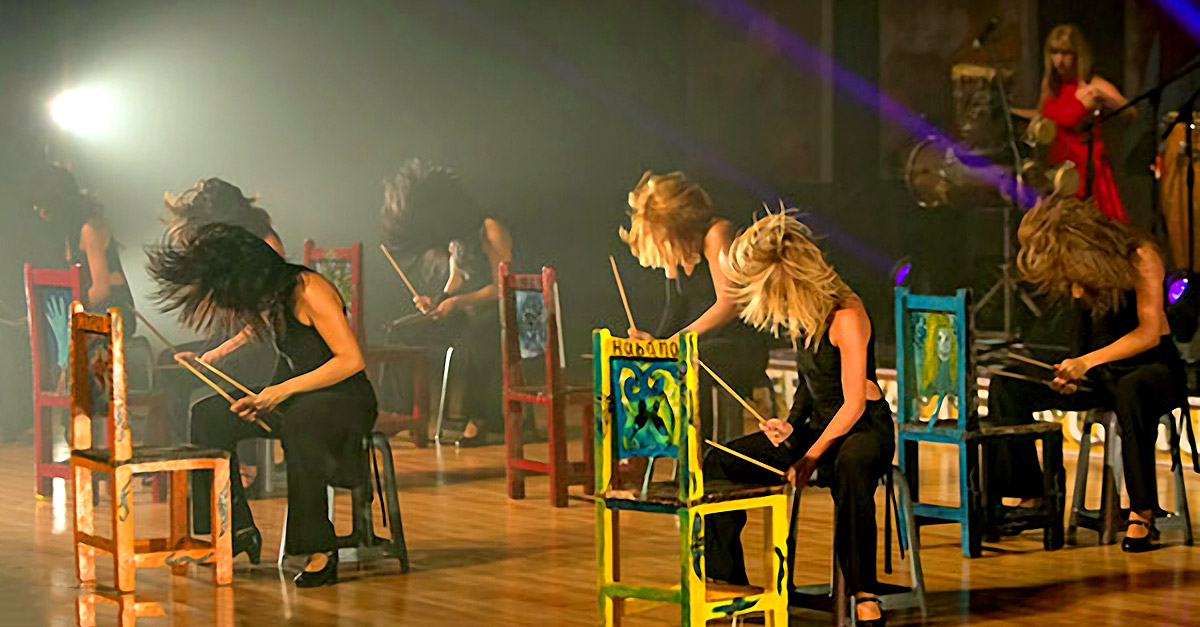
“One ought, every day at least, to hear a little song, read a good poem, see a fine picture, and, if it were possible, to speak a few reasonable words.” ― Johann Wolfgang von Goethe
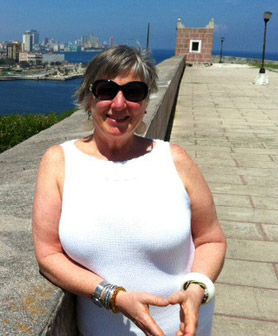
Our guide in Cuba gave us some strange advice at the start of our visit. “Wait for the Magic,” she said. Doubtful, I tucked Carol Steele’s words away, and waited to see if they would be true.
Believing that the Cuban buildings would be gray and crumbling, the people poor and sad, and the cars all old, I was unsure where any of Carol’s magic would appear.
The buildings were beautiful – once upon a time, but not magic today, except in their decline. The devastation of almost 60 years of harsh communism did not leave the people with much visible magic. I thought she had to be speaking of magic in the cars. Only a skilled troop of magicians could keep a fleet of 1950’s cars running after all this time. That would be the magic for sure.
But I had forgotten something.
“For centuries, Cuba’s greatest resource has been its people.” – Pico Iyer
Sure enough, every time I focused on the people, the magic would start to appear.
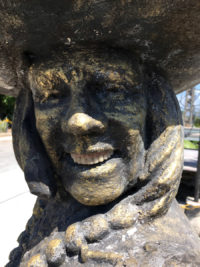
One of our first stops was Muraleando, a neighborhood where two local artists created a community development project with the streets as their workshops. Muraleando, meaning “muraling” or mural-making, covers every available wall with fanciful celebrations of Cuban life using many kinds of unusual materials.
“In a country where nothing is disposable and everything is useful, broken typewriters, old telephones, tire rims, wrought-iron chair parts – all were fair game to weld and paint and turn into sculpture.” – Manuel Díaz Baldrich and Ernesto Quirch Paz.
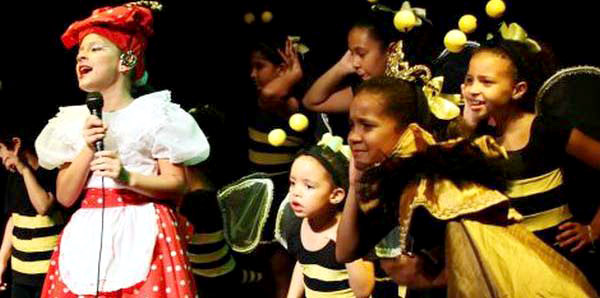 Our next stop was one of my favorites. La Colmenita, is an after-school program using song and dance as a social development tool for children.
Our next stop was one of my favorites. La Colmenita, is an after-school program using song and dance as a social development tool for children.
This “little beehive” of children have charmed audiences in 25 countries with their mix of dance and music in a high energy, ever changing repertoire that blends rock & roll and fairy tales with messages of justice and peace.
You will be treated to their video at the close, so don’t leave early.
It didn’t take long for me to see the magic Carol had promised. This magic is something that moves in the people and their art and it’s impossible to separate the two.
Habana Compás Dance was another one of my favorite experiences. These enthusiastic performers merge the spirit of Spanish dance with Afro-Cuban rhythm in new and exciting ways by combining dance with percussion – drumsticks, castanets, claves, and chairs.
As their music escalated, an energetic blond performer in front of me became more and more consumed by the Afro-Cuban rhythm, as if she were in a Santería ritual. I am glad I took this video.
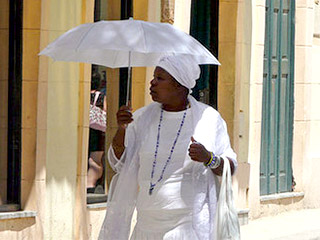
At the Gran Teatro de la Habana we hoped to see a performance by Alicia Alonso’s Cuban National Ballet, where Addul Manzano, now of Charlotte Ballet, began training at age 11. Alas, the ballet company was traveling so instead we saw Opera de la Calle “Espiritus.”
Espiritus is a new opera, featuring an lyawó, the religious name for a new initiate into the Santeriá religion.
The opera was fantastic and we were able to enjoy it more with our newly acquired understanding of Santeriá from visiting Casa de Africa, and listening to Carol, herself a lyawó.
This trip opened my eyes to the magic alive in the people and alive in the art of Cuba. Artistic expression matters to Cubans, and may be the secret of their survival through the dark days of the embargo.
“Wait for the magic,” Carol advised us. I am glad I did.
How do you think about art? Can art make us smart? Many education advocates say the arts increase test scores, generate social responsibility and turn around failing schools. How can that be true?
For older adults, improving the sense of happiness and social connection with creative engagement reduces isolation and depression. Doesn’t that sound good and wouldn’t it keep me out of the hospital?
Some say money spent on any form of art is just a waste of tax payer dollars. Can you tell me why you disagree or agree with that view?
As always, the conversation starts here.
“In the ordinary choices of every day we begin to change the direction of our lives.” – Eknath Easwaran
Epilogue
This is the La Colmenita video I promised. You will enjoy learning about this program that has received so much recognition around the world. Watch and enjoy my little bees.
P. S. Yes, the darling little bees got Joyce and me on stage, dancing with them. I wish there was a video of our performance, but sorry, maybe next time.

Went with the WACC in 2014. Images: woman with a frozen mango business thriving in a slum; the Havana skyline from a cocktail party on the roof of our hotel; the tangled jumble of electric wires on each pole; a Capella singers in Trinidad; the makeshift carts pulled by skinny horses in the countryside; the ballet rehearsal in an unairconditioned room; dancers with thigh muscles that let them leap higher than humans should; going to dinner in American convertibles that I recognized from Jr. Hi. And then there were the anti Communist jokes told by our Cuban guide: Tell me… Read more »
Sue – I love each of your memories, they are all in my head as well. I am full of Salvador Dali’s, The Persistence of Memory when I think of Cuba. Everything is surreal as I try to match Cuba to my North American identity. Then I remember: “True ‘objective reality’ does not exist.” The reality may be in your guide’s words: “Tell me what is most important to you and I’ll teach you to live without it.” Thank you for being part of the conversation. I value your thoughts as Choices Do Matters seeks to engage our differing views.… Read more »
Hi. So sorry I’m wicked late replying.
I think you saw different things then I had. You were with a different guide, and I don’t recall that statue at all.
I did infact see the La Colmenita. They were adorable! One little seven yearvold, got taken aeay-she fell asleep. A girl, who was the oldest of the group, seven yearsvold, took me bybthe hand and danced with me as well. Next timevwe see each other, I hope to share oictures with you. Can’t wait to read the other article.
Cuba reunion in the works?
Elizabeth –
I’m glad you enjoyed La Colmenita. The ‘little bees’ are very special.
I would love to see your pictures. Maybe you can arrange a reunion!
– Bruce